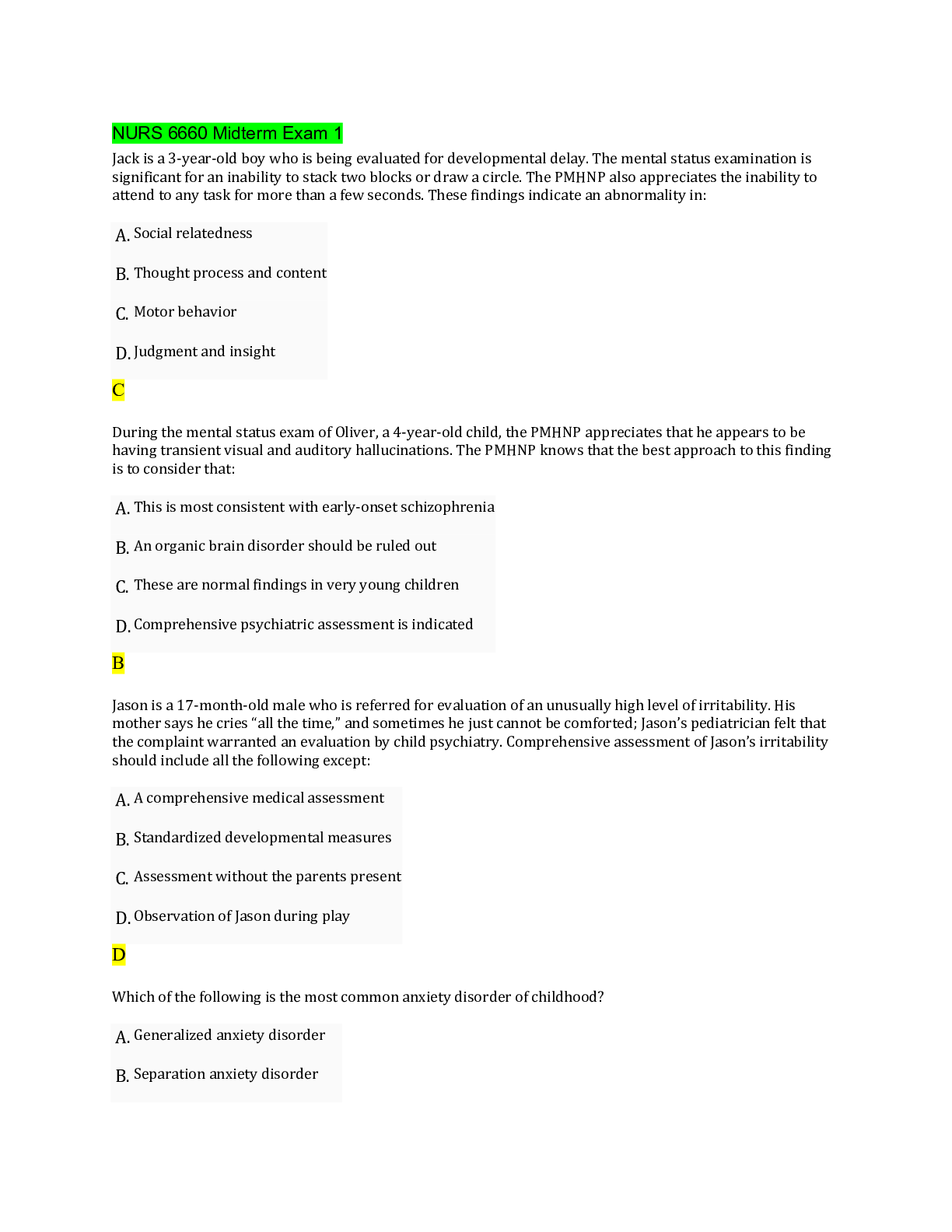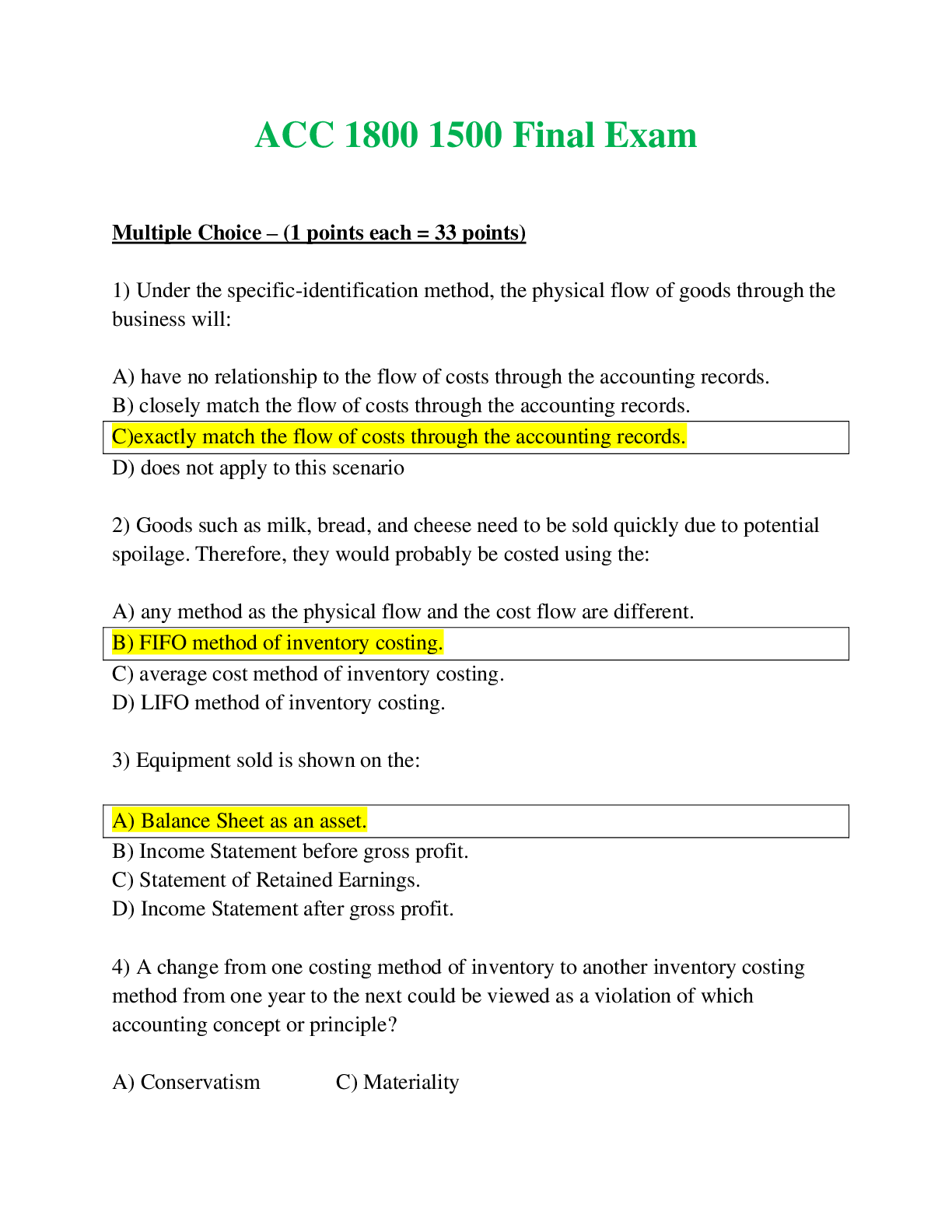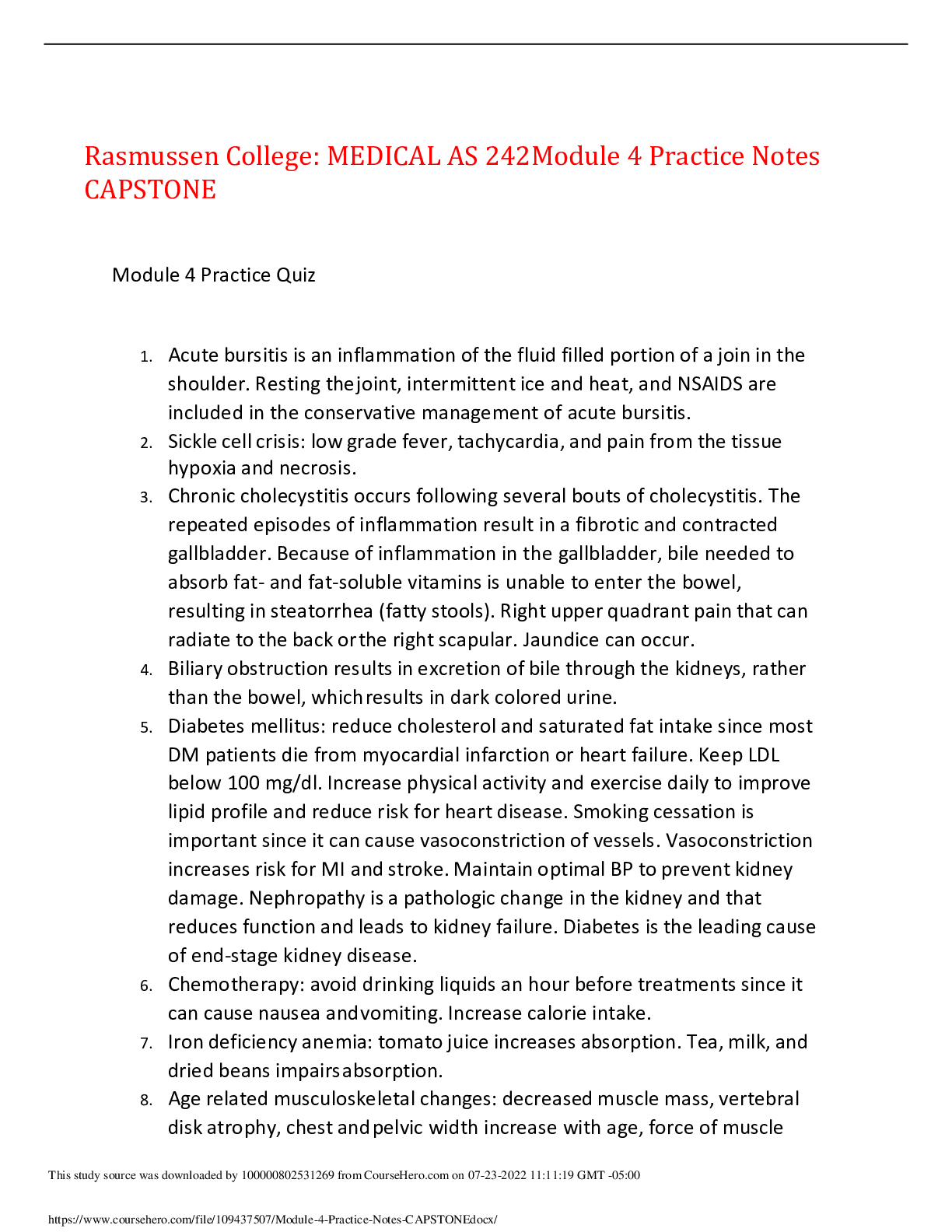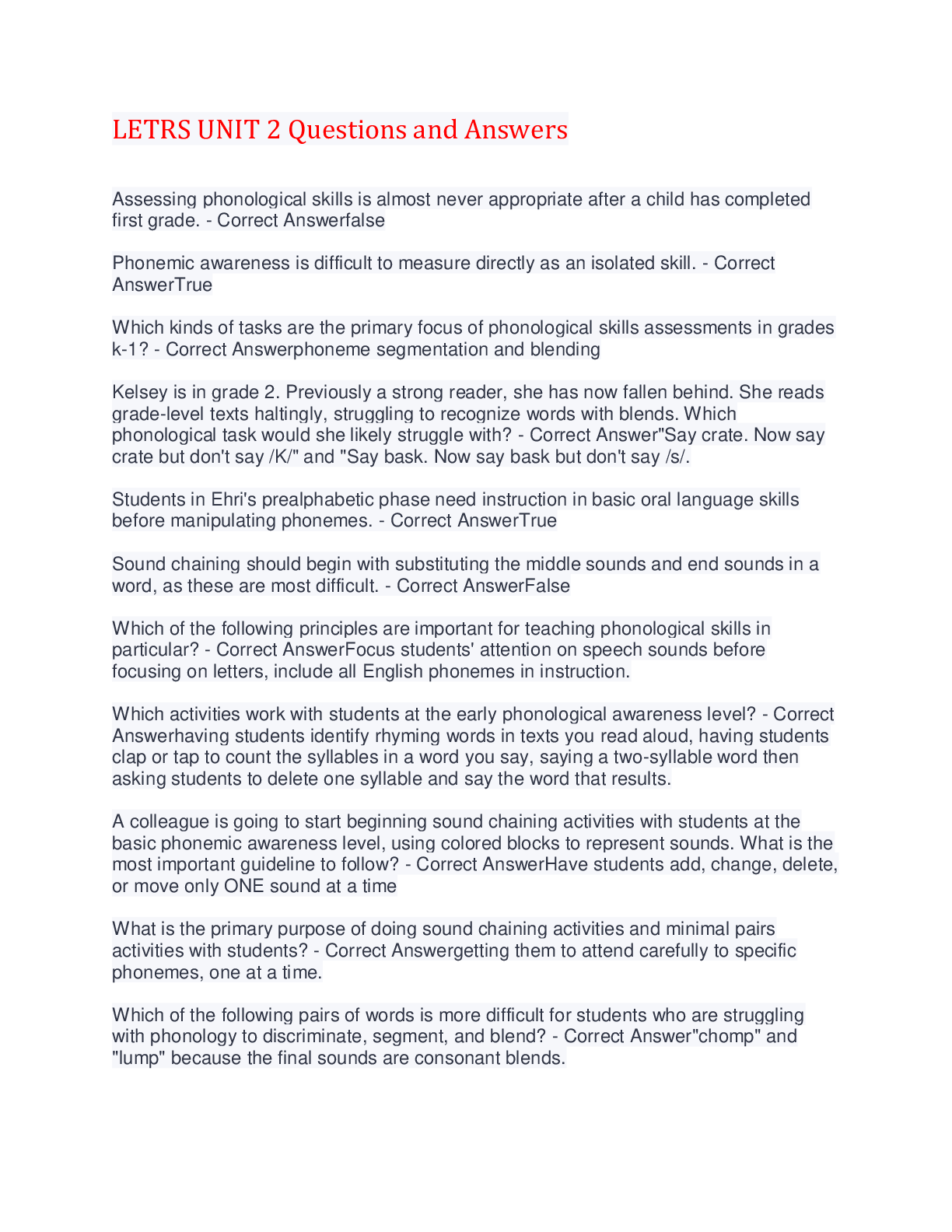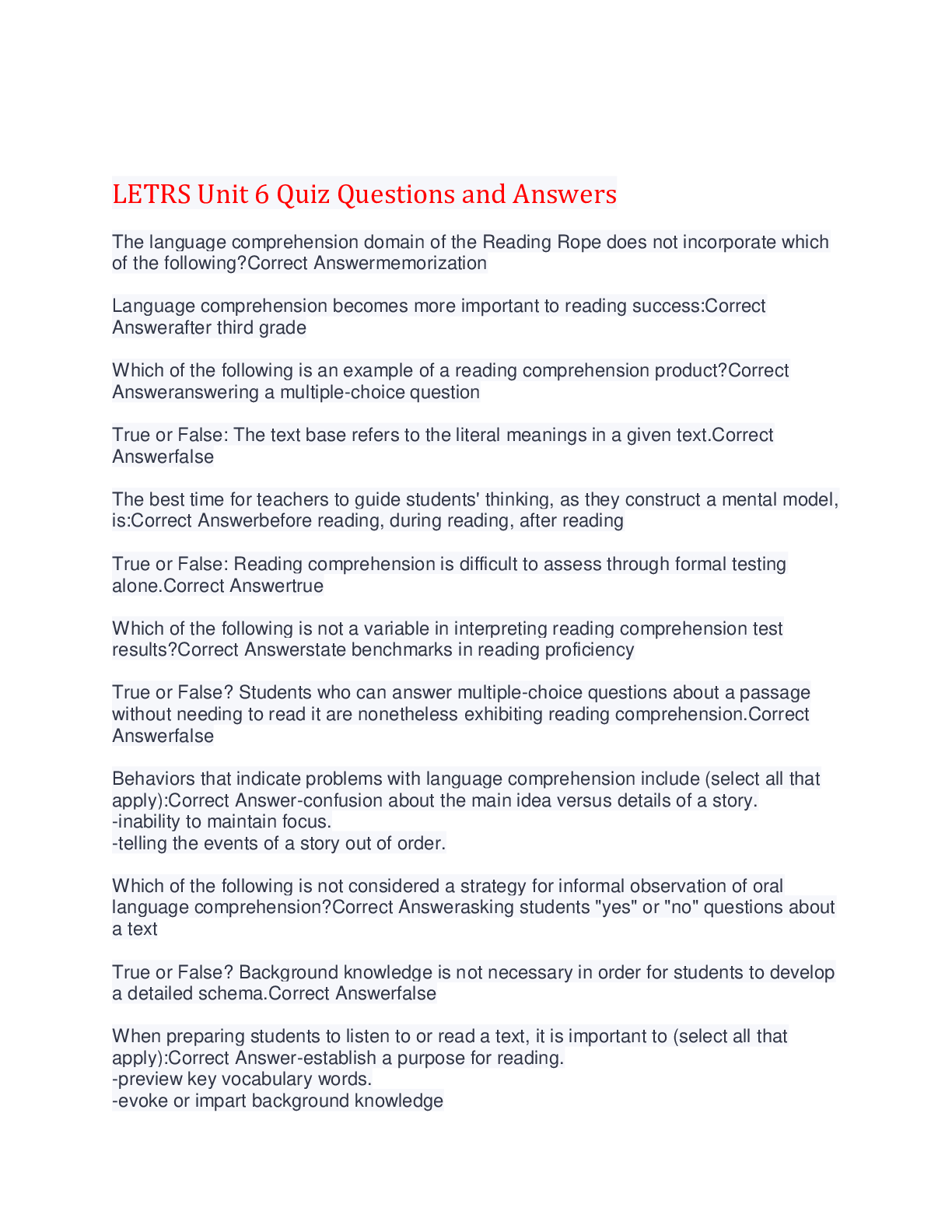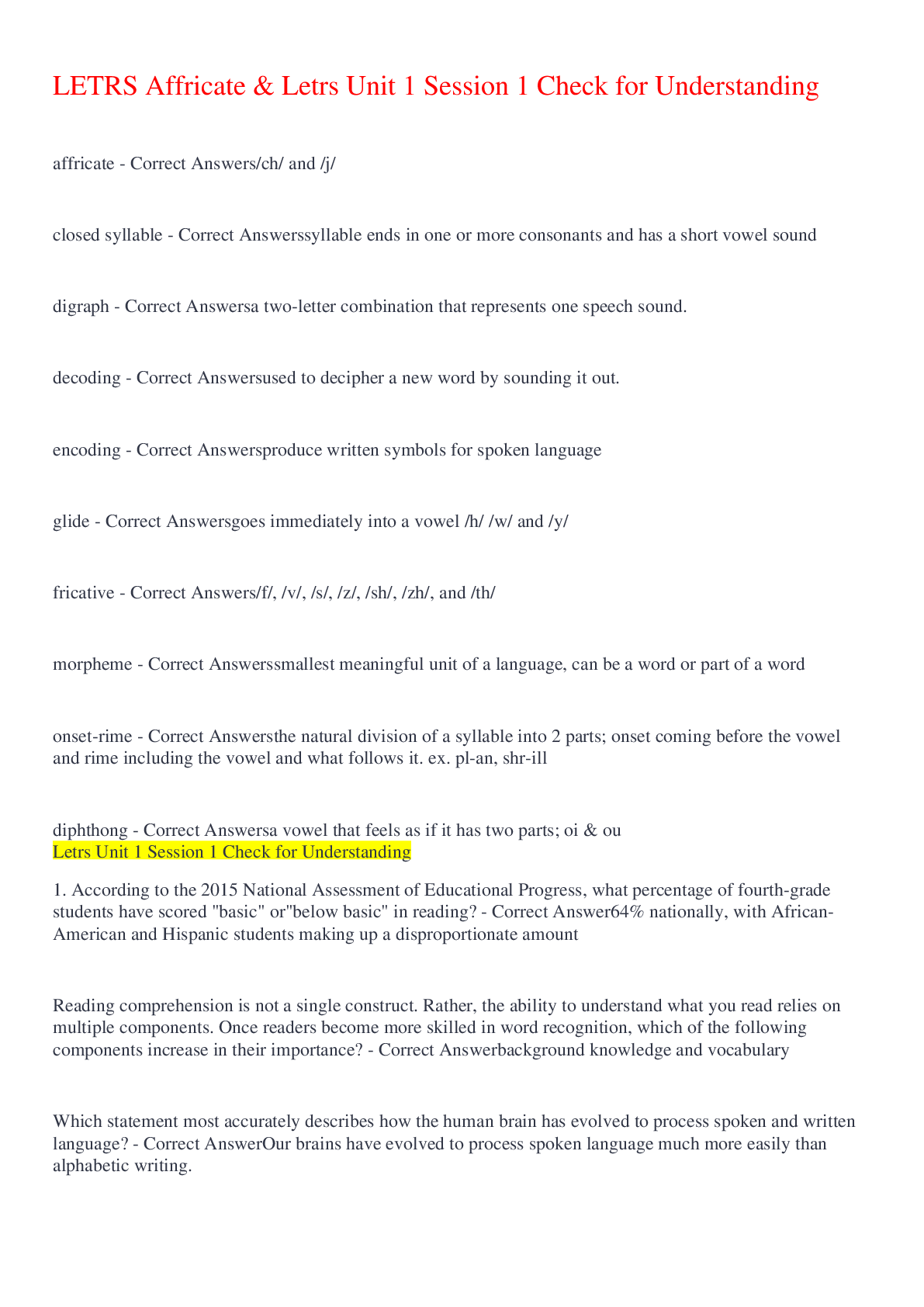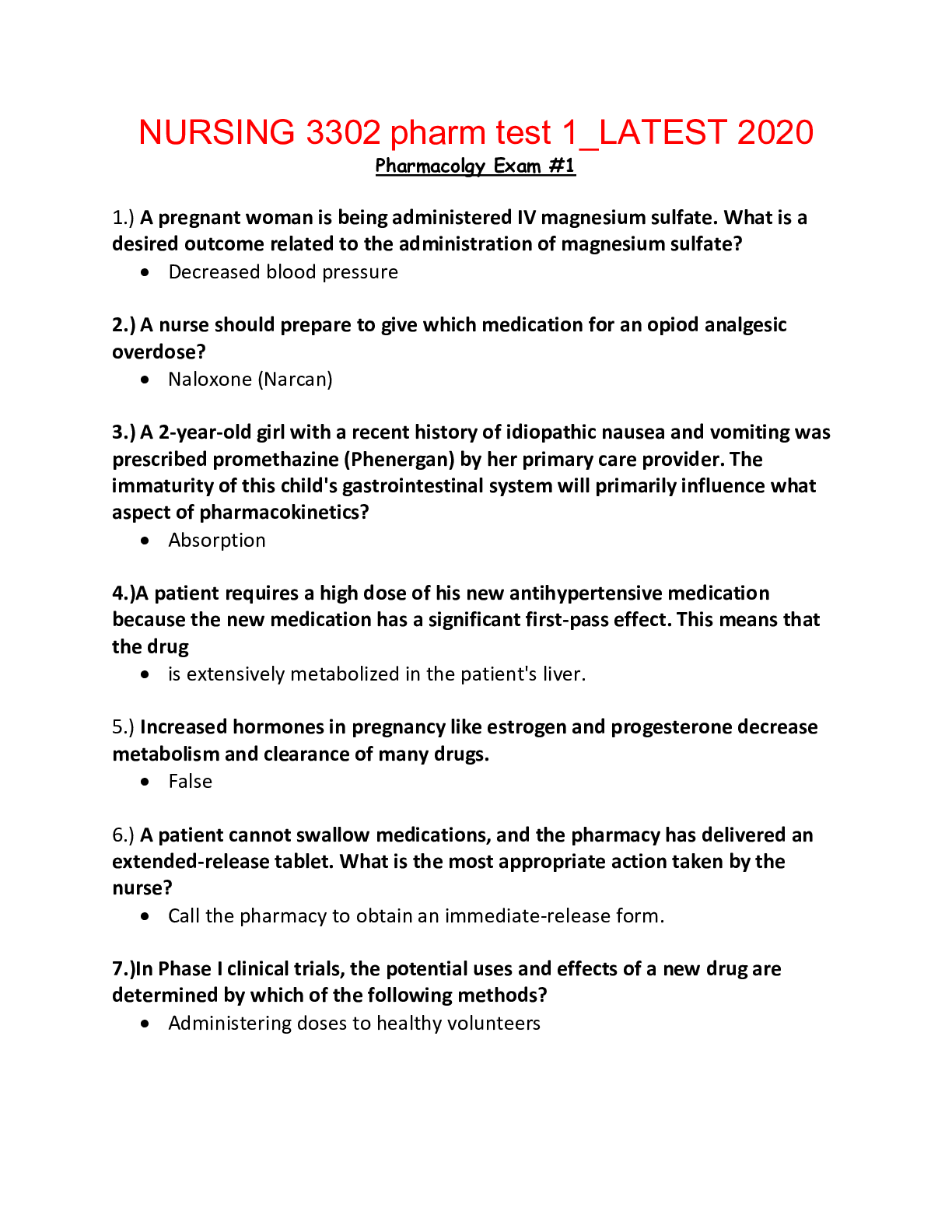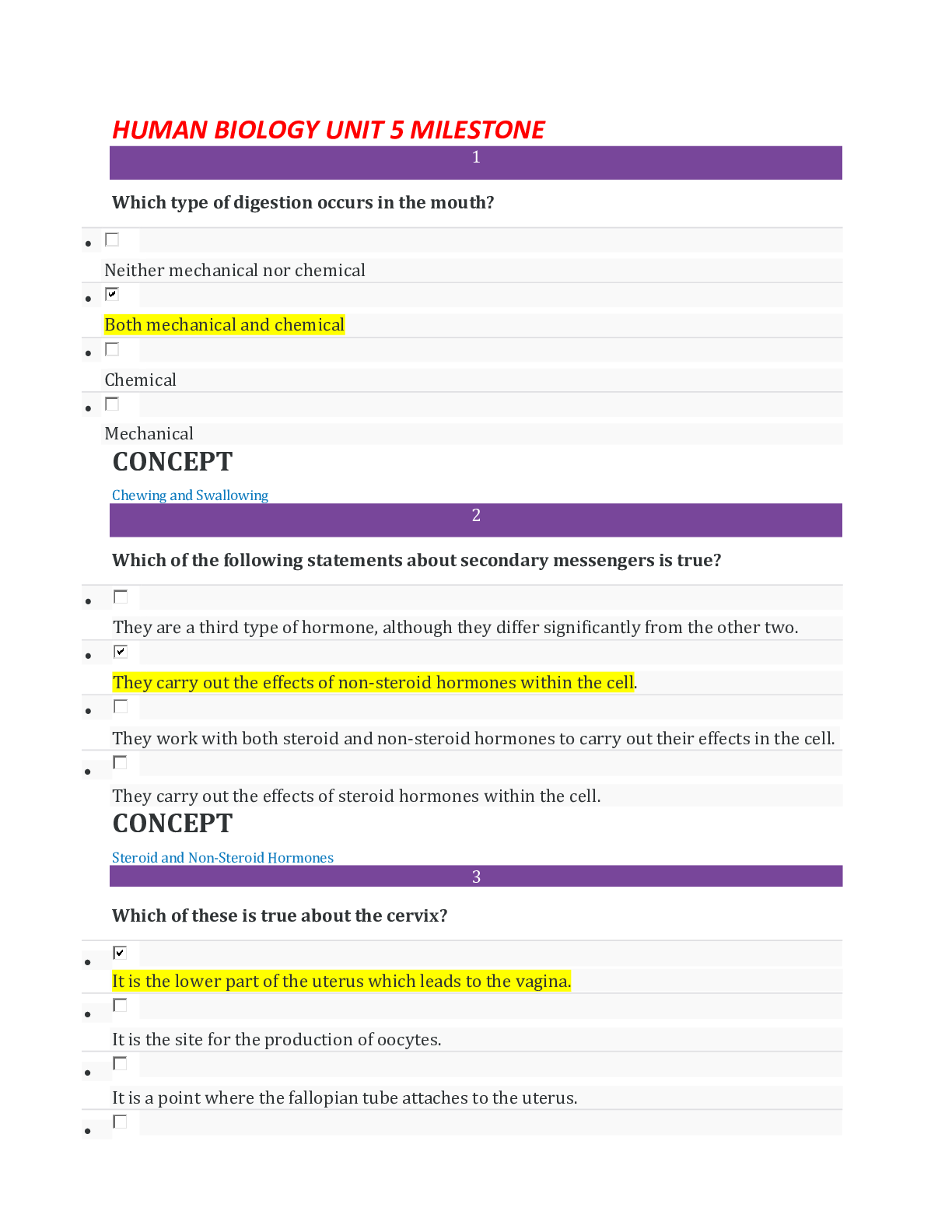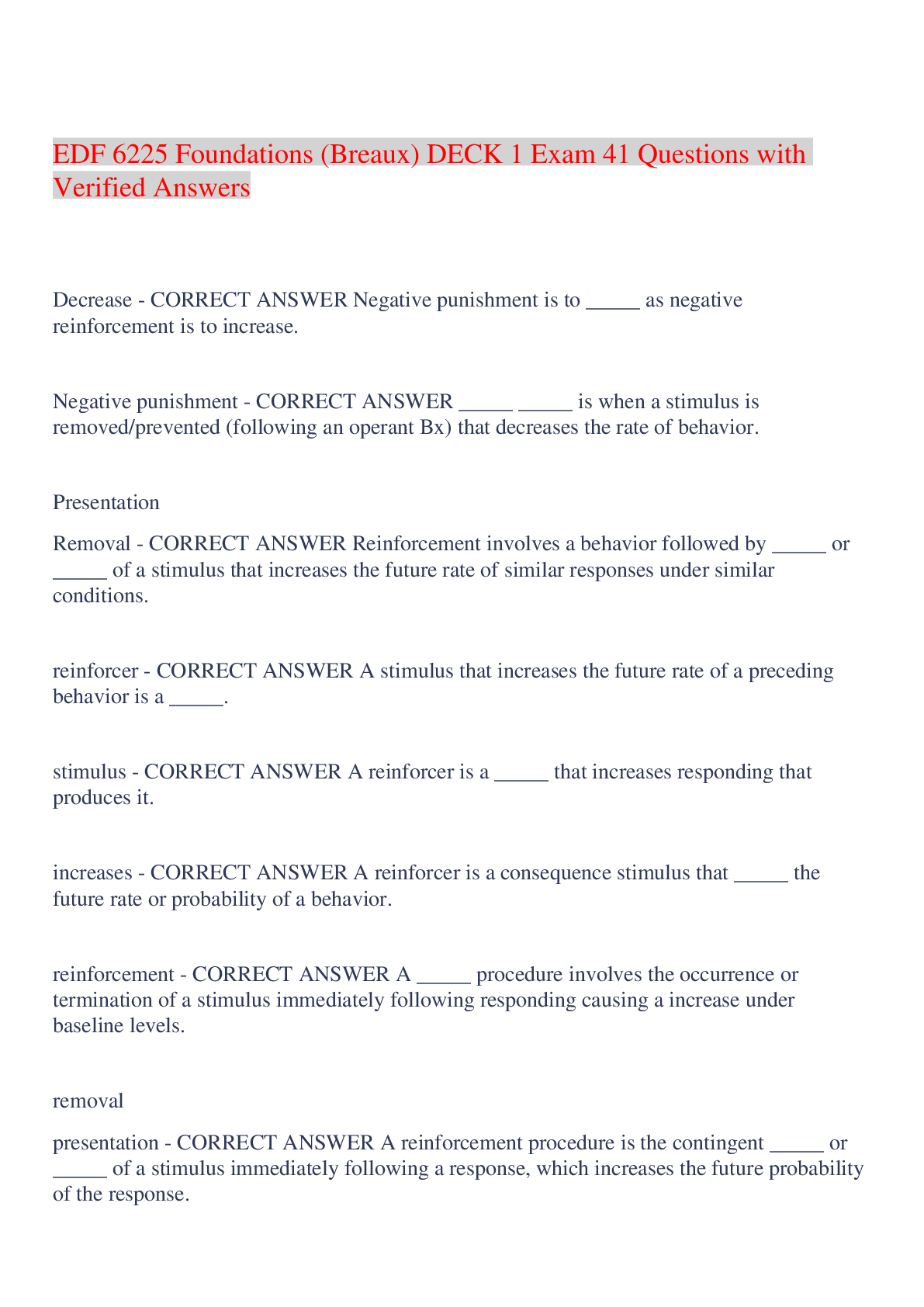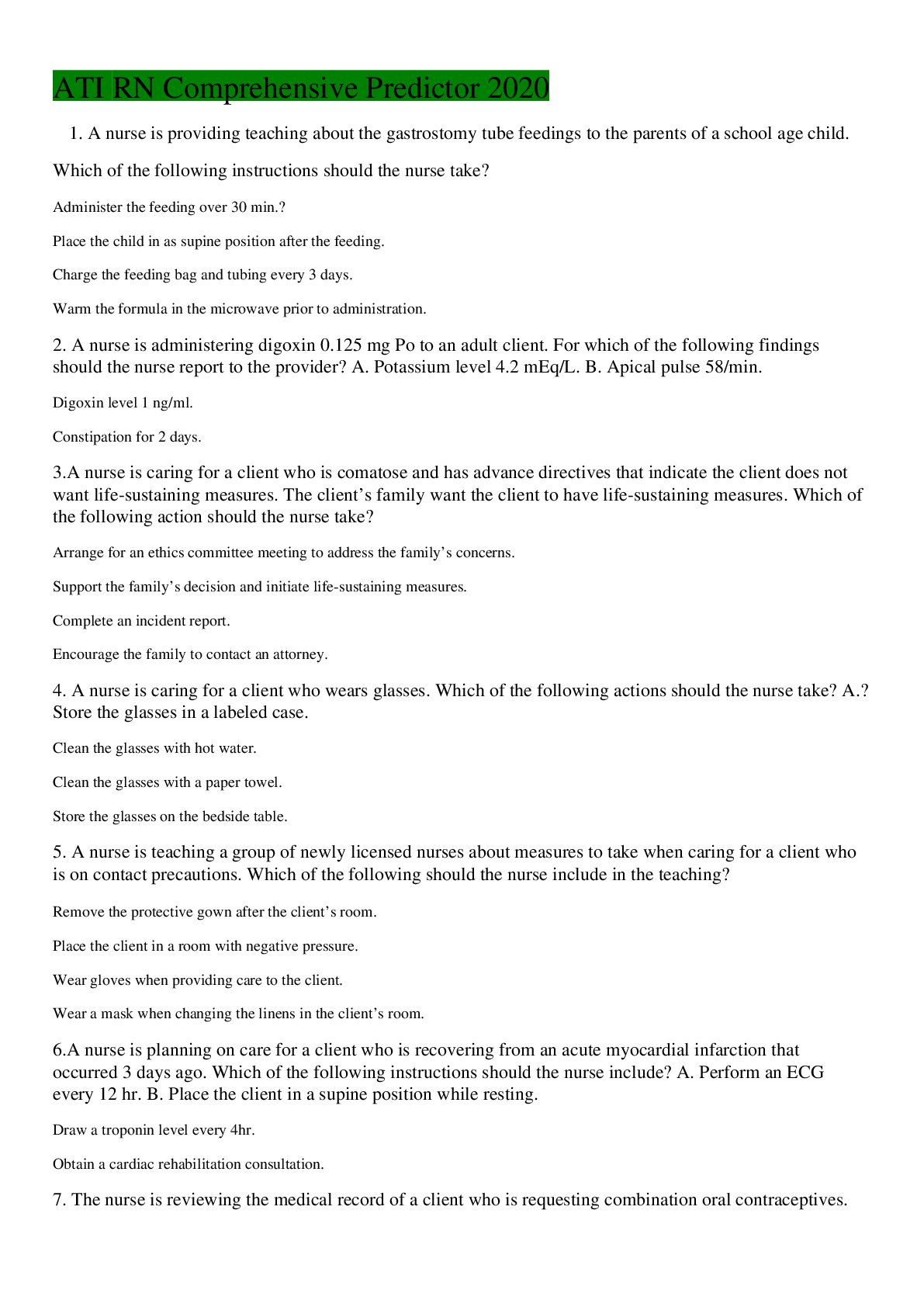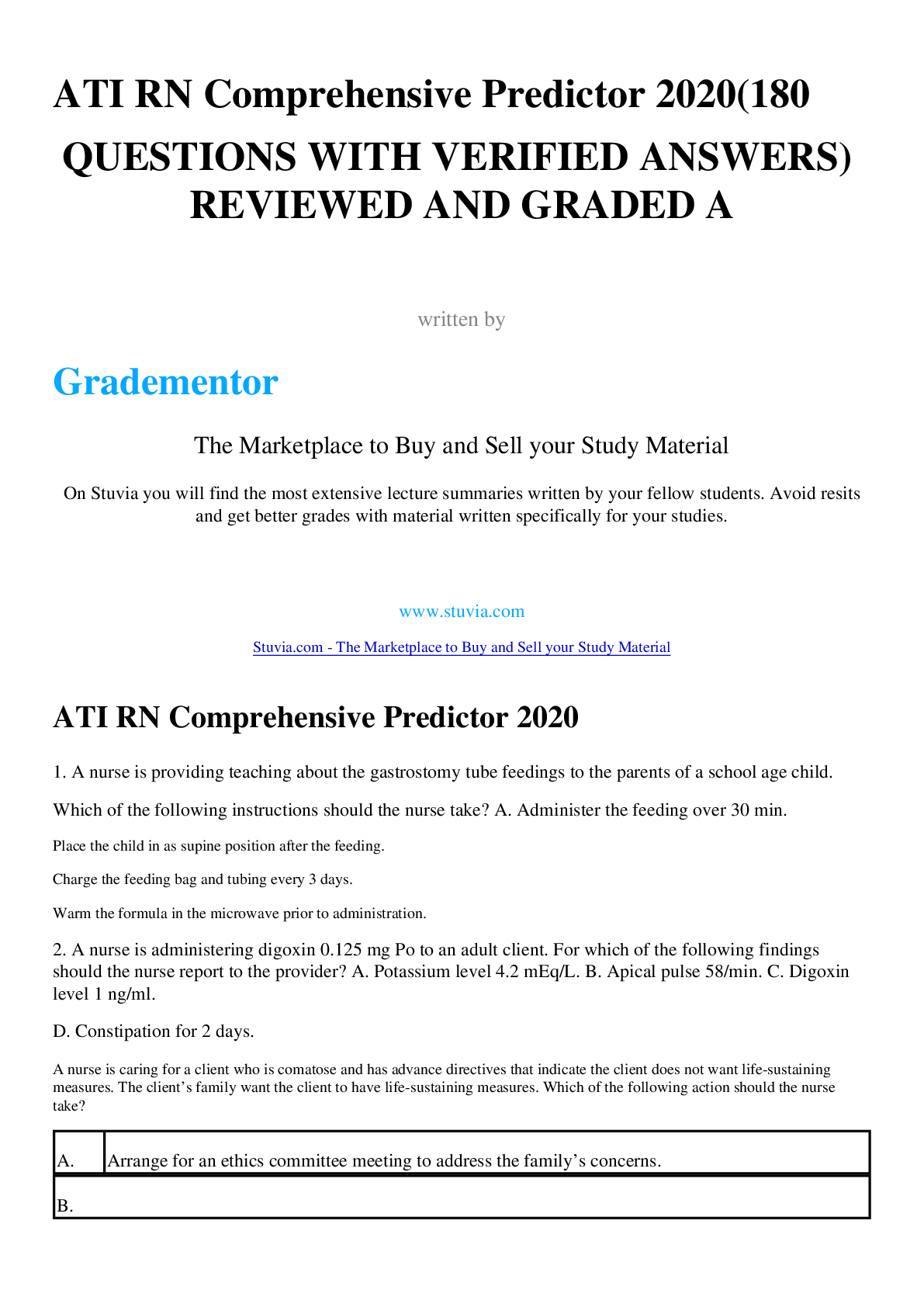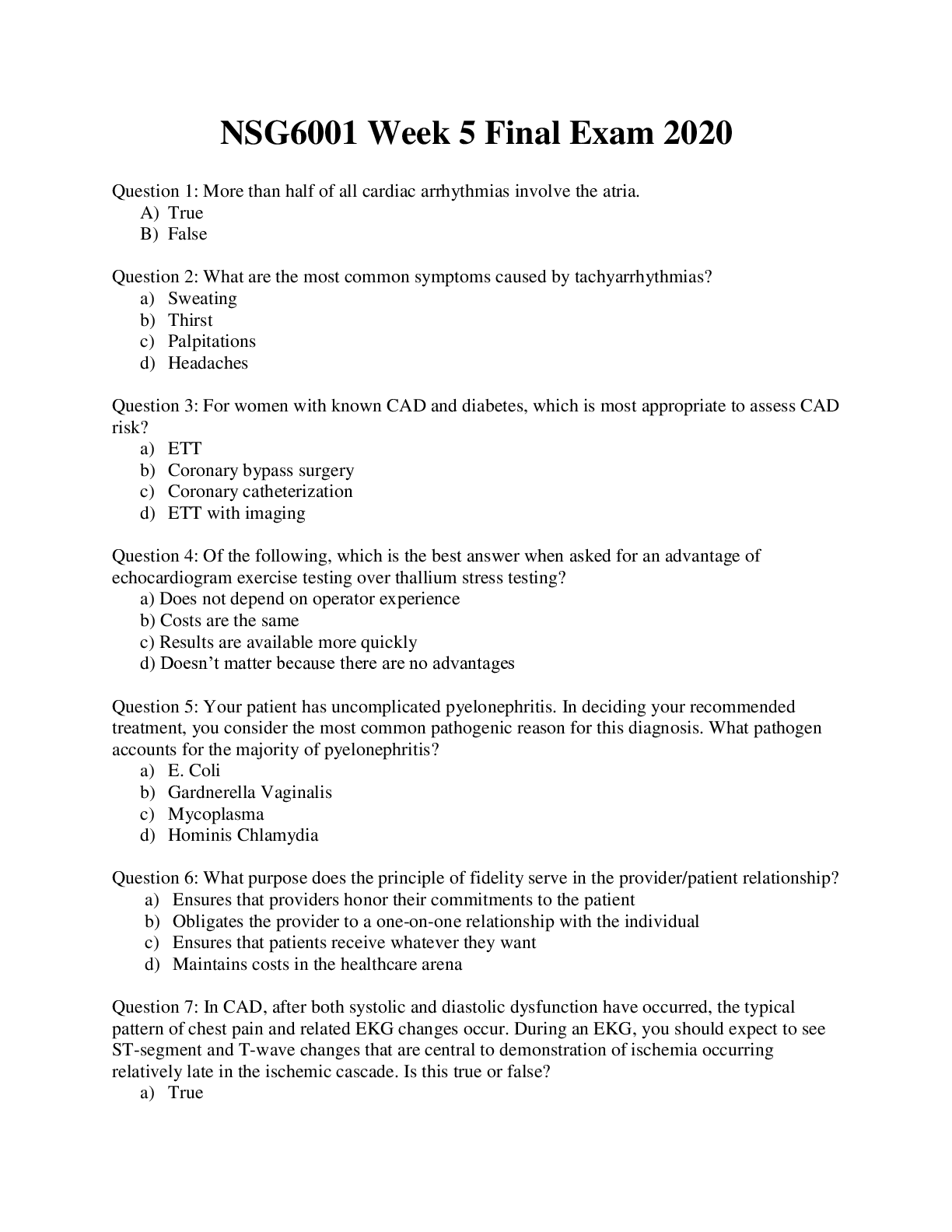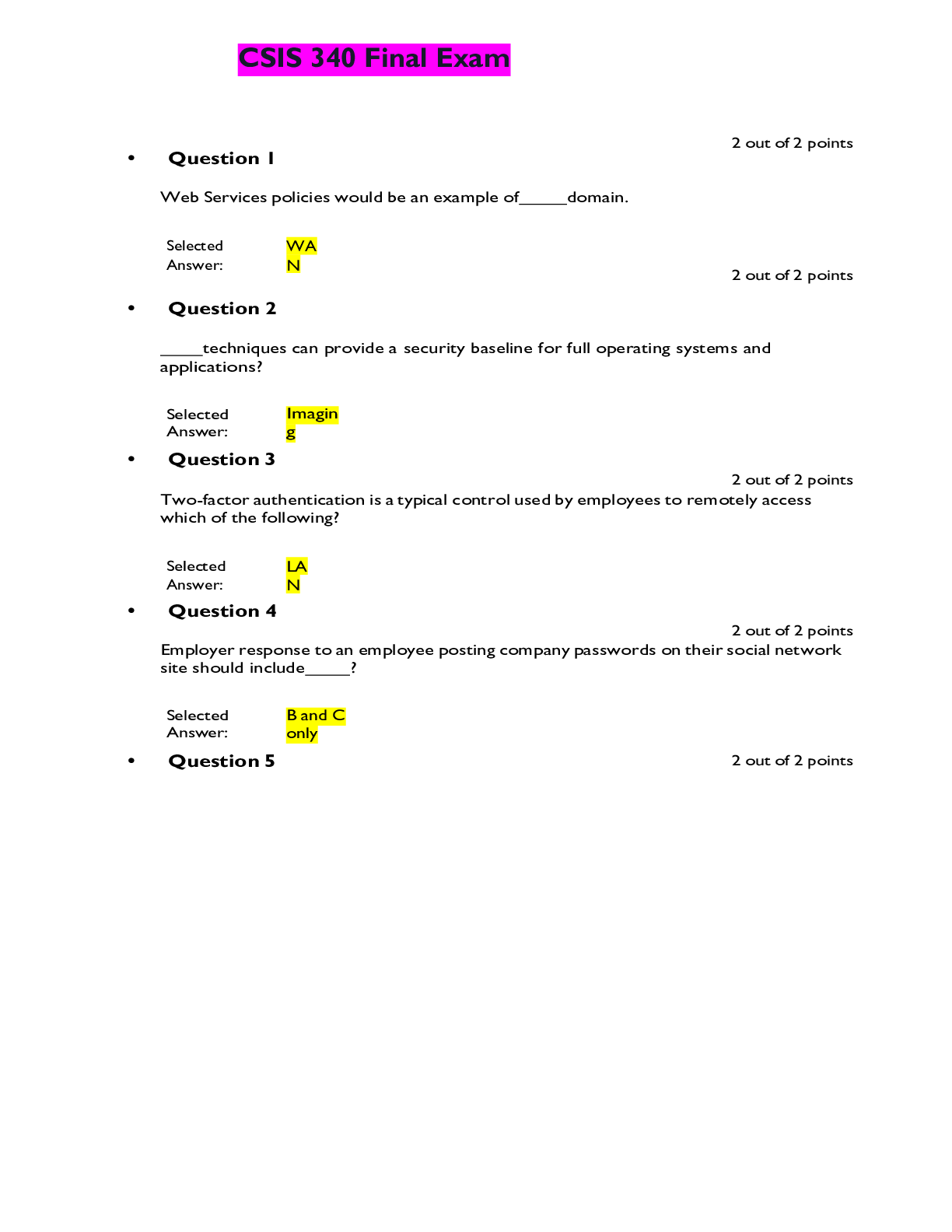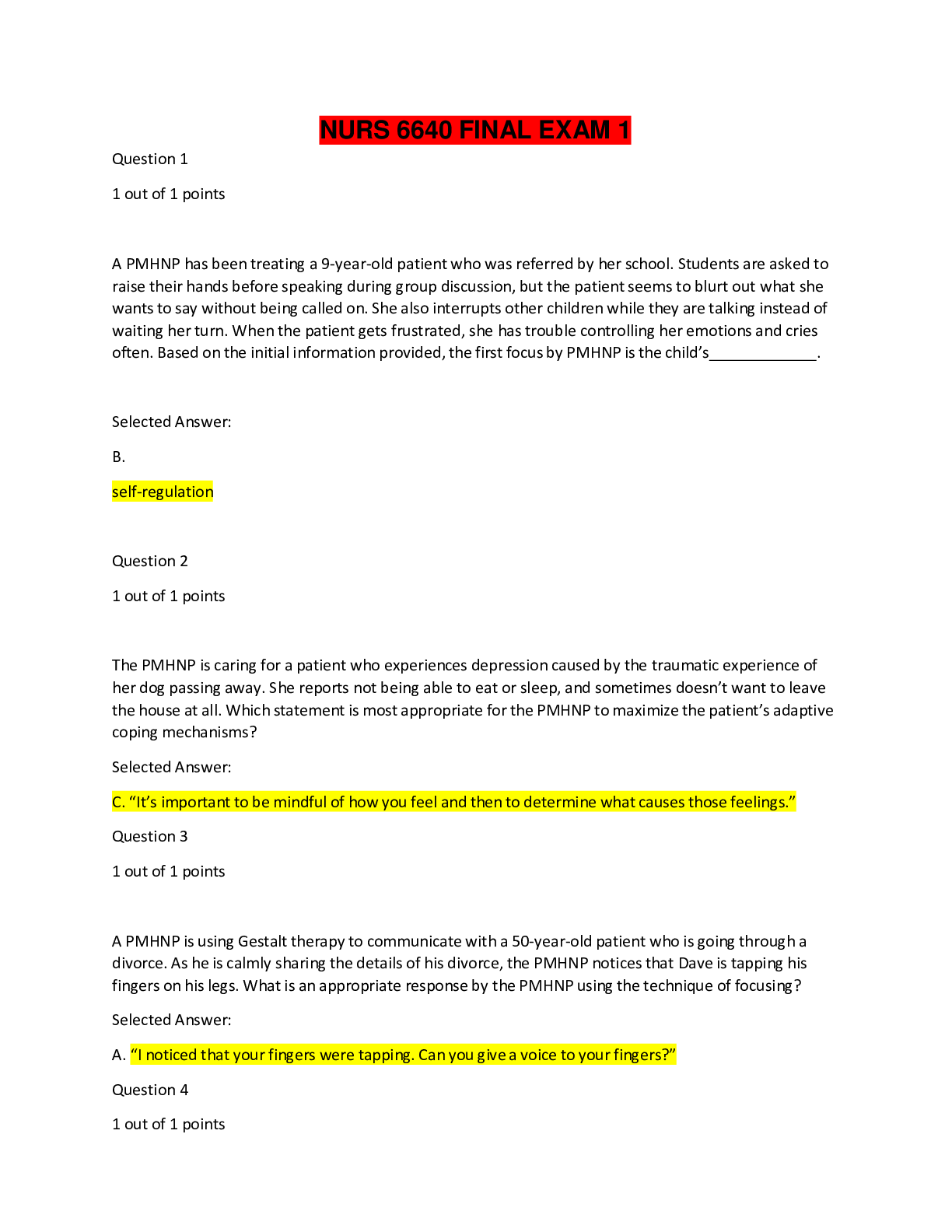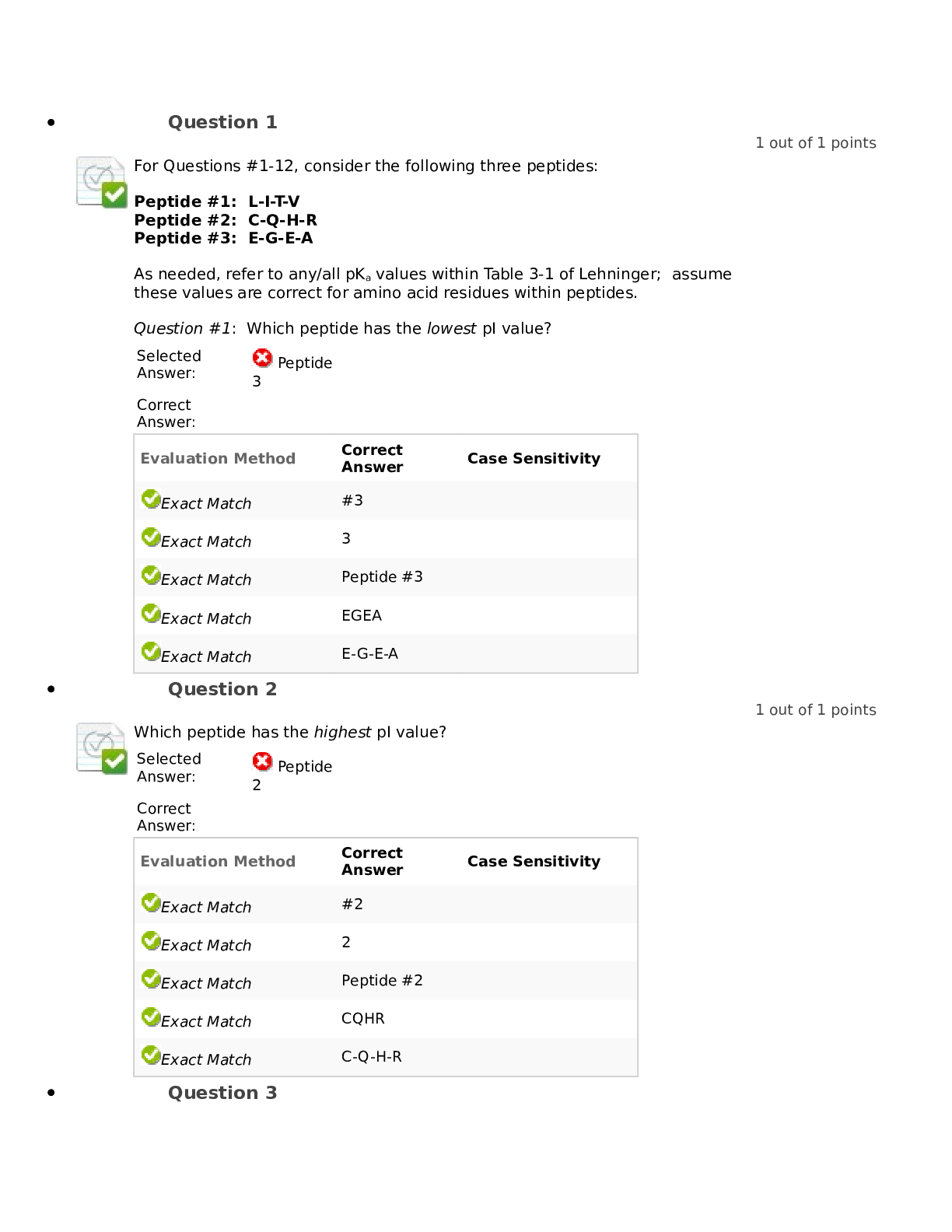Elementary k-6 ABCTE Exam 53 Questions with Verified Answers,100% CORRECT
Document Content and Description Below
Elementary k-6 ABCTE Exam 53 Questions with Verified Answers Phonological Awareness - CORRECT ANSWER Recognition of the distinct segments of spoken sound: words, syllables, and phonemes. (Example... : Kitty: composed of 4 distinct sounds (or Phonemes: /k/ /i/ /t/ and /e/ Phonemic Awareness - CORRECT ANSWER Recognition of phonemes, abiltiy to segment words into constituent phonemes, ability to blend phonemes and substitute phonemes to make new words. (Example: /k/ in kitty can also be used to begin the word CALL or CAN'T Phoneme - CORRECT ANSWER Smallest unit of sound: s, ch, f, e, sh Syllable - CORRECT ANSWER A word or distinct segment of a word that is naturally pronounced in a single, uninterrupted vocalization. (Example: cant, chalk, grid/dle, e/ryth/ro/my/cin) Voiced (and unvoiced) Consonants - CORRECT ANSWER Voiced consonants make your vocal cords vibrate; unvoiced do not (example: voiced: b, d, g Unvoiced: p, t, k) Morpheme - CORRECT ANSWER Smallest unit having meaning: base words, prefixes, and suffixes Example: biology (bio-)="life" (logy)= "science" biologist - {-ist"} = one who practices chokers- {choke} obstruct the trachea -er= one who [chokes] -s = more than one Phonics - CORRECT ANSWER Study of relationships between sounds and their written form. Example: in the word rock, the first letter, the r, makes the /r/ sound. the o sounds like ahh, and the ck sounds like /k/. you'll see the ck after short vowel sounds, like in rock, sick, tach, luck, neck, chick, but not after long vowel sounds, like in lake, nuke, poke, hike, and cheek. words that end with a "vowel + consonant + e" combination (VCE), the vowel is long, which means that it sounds like its name: ay, ee, eye, oh, you. Phoneme - CORRECT ANSWER represents smallest element of spoken language grapheme - CORRECT ANSWER the written representation of a phoneme, and is usally the letter (or letters) that make that sound. if the grapheme contains two letters, then it is a diagraph. diagraph - CORRECT ANSWER a grapheme that contains two letters morpheme - CORRECT ANSWER smallest unit of a word that has meaning Alphabetic Principle - CORRECT ANSWER The Idea that letters can represent sounds Smallest units of SPEECH SOUNDS - CORRECT ANSWER Phonemes Symbols that represent PHonemes (ex: letters) - CORRECT ANSWER Graphemes Made up of more than one letter (ex: ch - CORRECT ANSWER Digraphs Breaking down words into their component PHONEMES - CORRECT ANSWER Segmenting Morpheme is: - CORRECT ANSWER The smallest unit of LANGUAGE that creates MEANING The word "choke" is a - CORRECT ANSWER Morpheme In the word "choker" the "er" is - CORRECT ANSWER Morpheme (because "er" conveys meaning all by itself. It refers to the first part of the word, the one who chokes. // represent what? - CORRECT ANSWER phonemes { } represent what? - CORRECT ANSWER morphemes {a-} - CORRECT ANSWER Morpheme- is a prefix that adds a negative denotation to such words as amoral, apolitical, atheist, and apnea. -ist ending is a... - CORRECT ANSWER MORPHEME- smallest units of language that can have meaning. -ist suffix means "one who practices" "HARPIST" Name the Phonemes, unvoiced consonant, morpheme, onset and the rime. - CORRECT ANSWER phonemes: /h/ /a/ /r/ /p/ /i/ /s/ /t/ unvoiced consonant: "h" Morpheme: -ist "one who practices onset: "h" rime: "arp" Onset and Rime: - CORRECT ANSWER parts of SYLLABLES; the ONSET is the first consonant the RIME is made up of the vowels that follow and consonants that follow the ONSET Onset - CORRECT ANSWER First Consonant Rime - CORRECT ANSWER made up of the vowels that follow and consonants that follow the onset Synthetic Phonics - CORRECT ANSWER Teaching the basics of GRAPHEME-PHONEME RELATIONSHIPS (students learn to blend these into words) Explicit - CORRECT ANSWER clear and to the point systematic - CORRECT ANSWER successful modes of instruction are deliberate and measure example of SYNTHETIC PHONICS: - CORRECT ANSWER /b/ /a/ /t/ /k/- teacher systematically explores simple words that employ these PHONEMES. CAT and BAT, blending the phonemes to produce MORPHEMES Blending - CORRECT ANSWER knowing a group of phonemes students can combine these to form words. Segmenting - CORRECT ANSWER breaking words down into the phonemes that comprise it. (segmenting "tap" /t/ /a/ /p/ DECODING - CORRECT ANSWER (associated with reading) decoding means using phonemic knowledge and prior knowledge of spelling conventions to read a word. (experienced readers decode rapidly. early readers use blending to slowly decode words usually one at a time) Analogy Phonics - CORRECT ANSWER Prior Knowledge: using a word students are familiar with to pronounce another word. such as /b/ank and /p/ /r/ank. Analytic Phonics - CORRECT ANSWER Prior Knowledge: similar to analogy but small difference. the way you introduce the /p/ and the /r/ is different from the analogy method. you would ask the students a word that contains /pr/ blend like "pretty" and ask them a word that starts like "pretty" and ends like "bank" to come up with the word "PRANK" EMBEDDED PHONICS - CORRECT ANSWER (least popular) analogy or analytic approaches are fine, the difference is you are addressing a word type as it happens Recognizing when words begin or end with the same sound is what type of phonological awareness skill? - CORRECT ANSWER Analogy Phonics Difference between Analogy Phonics and Analytic Phonics? - CORRECT ANSWER Analytic Phonics uses FULL WORDS instead of phonemes out of context Phonics through spelling: - CORRECT ANSWER explicit phonics instructional methods begins with a spoken word and ends with a written word starts at the phoneme level and builds toward the word level - CORRECT ANSWER Synthetic Phonics combining previously learned phonemes to form words (segmenting is breaking words up into phonemes) - CORRECT ANSWER Blending The use of speling patterns and phonemic awareness to recognize a word - CORRECT ANSWER Decoding should be explicit, teacher takes a deliberate course of action in introducing phoneme-grapheme relationships - CORRECT ANSWER Phonics instruction Instruction - CORRECT ANSWER should be systematic; the teacher organizes the material in a way that leads students from phonemes to groups of phonemes to words starts at the whole word level and then analyzes their component phonemes - CORRECT ANSWER Analytic Phonics What is the second SYLLABLE of the word: Basement - CORRECT ANSWER -ent (m is the onset) Decoding - CORRECT ANSWER phonemic awarenes to recognize a word Etymology - CORRECT ANSWER study of the words origins and its usage over time Morphology - CORRECT ANSWER study of word structure Orthography - CORRECT ANSWER study of spelling patterns and conventions Orthography - CORRECT ANSWER study of spelling patterns and conventions Automaticity - CORRECT ANSWER ability to quickly and easily decode words (not fluency) [Show More]
Last updated: 1 year ago
Preview 1 out of 6 pages
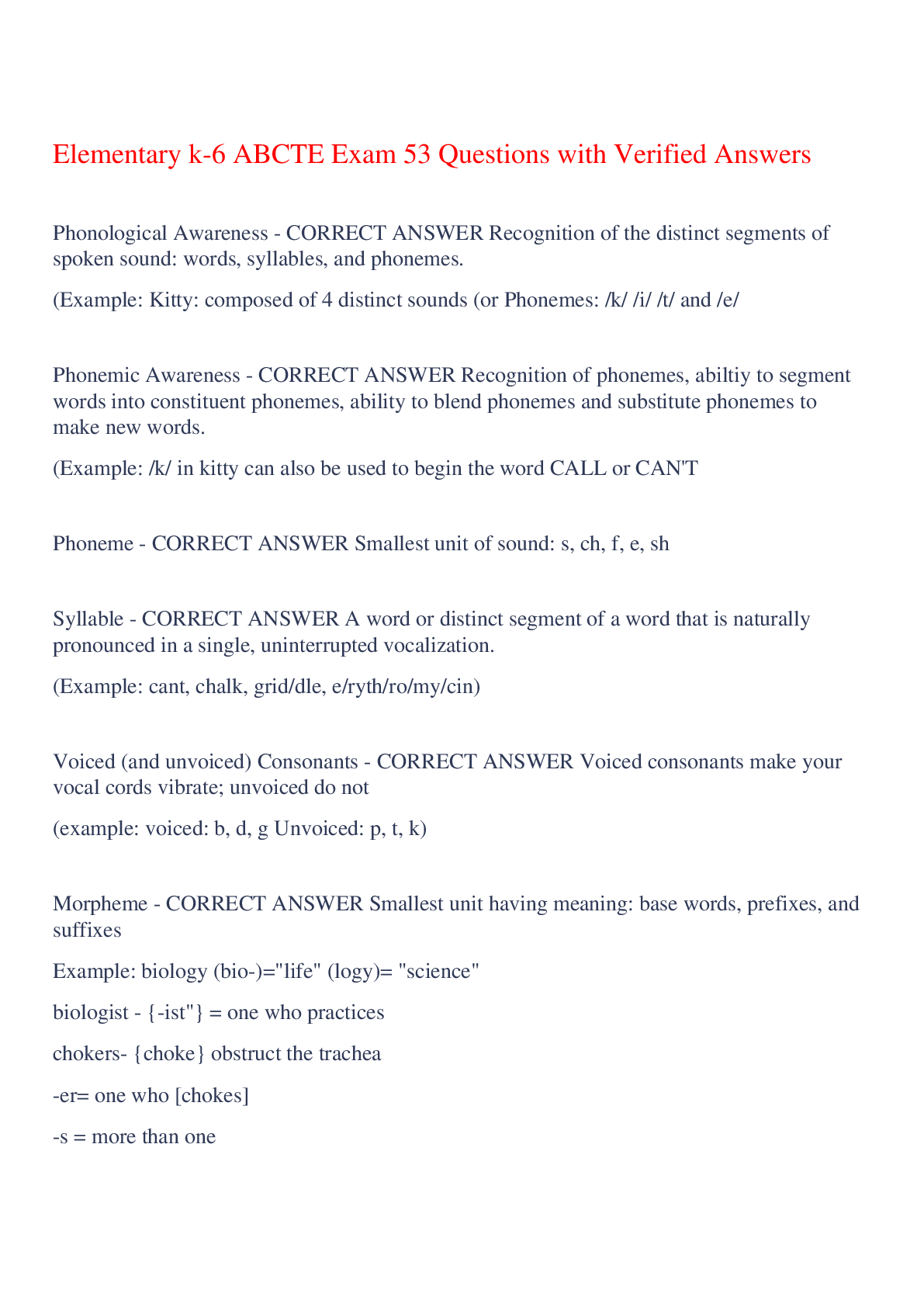
Buy this document to get the full access instantly
Instant Download Access after purchase
Buy NowInstant download
We Accept:

Reviews( 0 )
$9.00
Can't find what you want? Try our AI powered Search
Document information
Connected school, study & course
About the document
Uploaded On
Oct 15, 2023
Number of pages
6
Written in
Additional information
This document has been written for:
Uploaded
Oct 15, 2023
Downloads
0
Views
82



